What you see above is me dressed in NCC uniform in 1988 as the Troop Sergeant Major (TSM) of my unit.
When I was studying in middle school, in 1988 and 1989, I had joined the unit of the National Cadet Corps (NCC) that was in my school. The two years I attended the NCC programs and camps had given me many memorable moments and had a role in shaping me.
About NCC
NCC was set up in 1948 just after Indian independence by the constituent assembly. The aim of NCC is to develop character and comradeship amongst the young citizens of India. Students at registered schools and colleges in India can enrol in their respective NCC units. Not every institution has a unit. The units are overseen by designated offices of the Indian armed forces in the region. India doesn’t have conscription, and NCC has no combat roles – it is aimed to provide youngsters with exposure and an opportunity to interact with Indian armed forces for social good – a few in NCC get attracted by these interactions and join the armed forces on their own will, but that is an exception than an expectation. Wikipedia says there are over 1.3 million students in NCC each year.
During the annual offsite camps and programs, NCC cadets are given basic training on handling small arms in a shooting range and can participate in drills, the prestigious of which is getting selected for the NCC parade in the Indian Republic Day celebrations in New Delhi every year on the 26th of January.
The training & drills
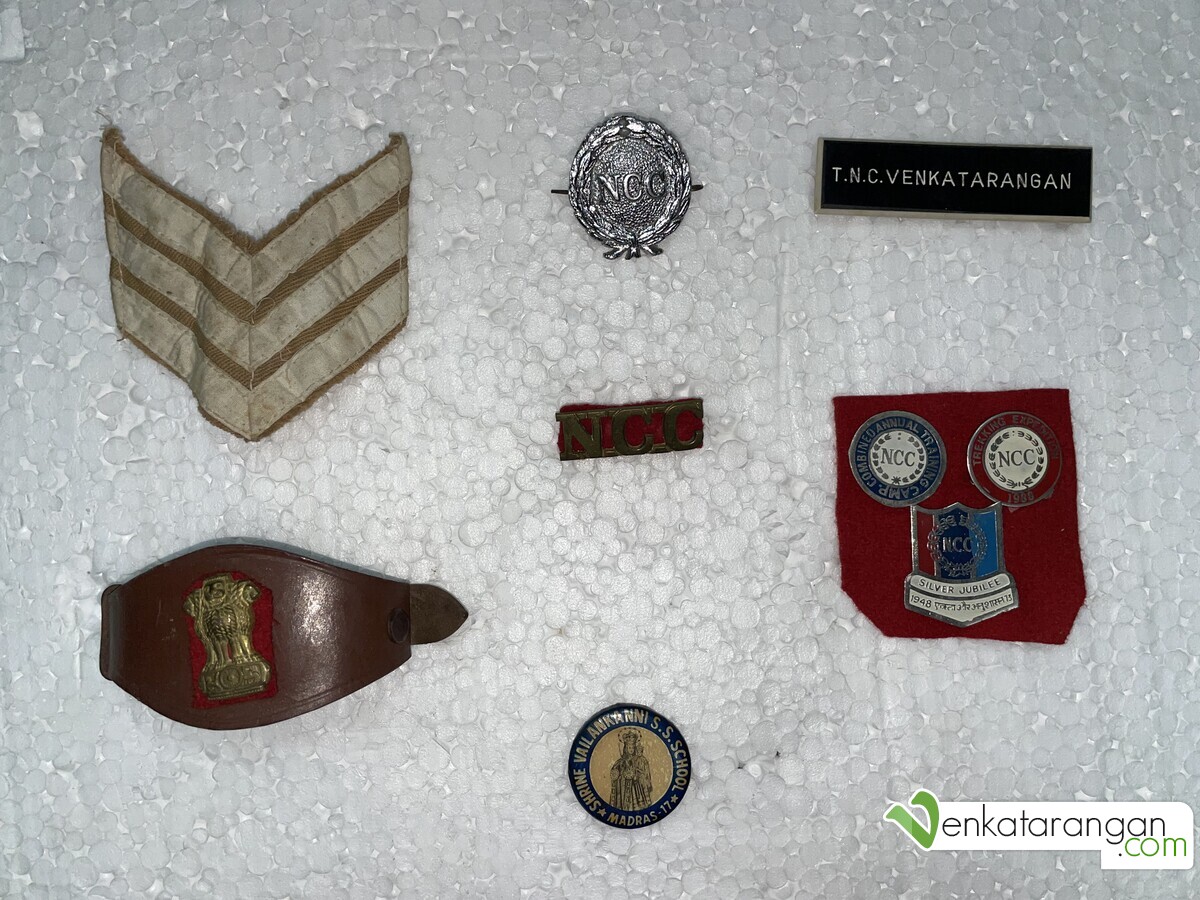
My Name Tag, TSM Insignia (the three stripes), the round silver NCC Badge that’s worn in the cap, the NCC initials worn in the shoulder flap, the badges I got for the two camps I attended and my school badge
If I remember right, we had drills twice a week in our school (Shrine Vailankanni Senior Secondary School, T.Nagar, Chennai) campus. It will happen from 7 AM to 8 AM, just before the school timings. The drill will consist of a march-past guided by the local army (or navy or airforce) officer. Due to my loud and clear voice and my performance in the annual camp I was selected as the Troop Sergeant Major (TSM) of my unit, a dream at that age. It meant, I can escape the parade walks, but can issue commands for the unit to follow! This experience of leading a team made me an entrepreneur – though not all was easy, anything going wrong in the parade or any shabbiness of the cadets in my unit meant I get chastised by the officer and may even get punished.
In the picture above, you see my school badge – Chennai was then called Madras. The other items were worn as part of my NCC uniform. The three badges on the bottom right were given after each camp I attended during the two years. The one above was my name tag, which I felt so happy to sport in front of my fellow cadres and school students – to see my name embossed on a tag was a great feeling. The round silver NCC Badge was worn in the cap, and the NCC three-letter initial badge was worn in the shoulder flap. The three white stripes insignia meant in our division I was the TSM of the unit, a fancy rank indeed. The proudest item for me (and every Indian) was the State Emblem of India (the Lion Capital of Ashoka) that was to be worn in my arm near the wrist on special parades.
After thirty-four years, in 2022, I still have these items with me.
Annual camp in Tiruvottiyur, Chennai in 1988
One of the requirements and the highlight of being in NCC was the Annual Camp. For a week or ten days, enrolled cadets are to stay offsite along with cadets from other units in the division. For our unit, in 1988 the camp happened in Vellayan Chettiar Higher Secondary School, Tiruvottiyur. It was hard adjusting to the lack of comforts of home but soon turned out to be fun due to the friends I made – the other boys were from public schools from other parts of the state. I remember one of the activities, was to decorate the room (classroom) we were staying in with the items we had in our backpacks and what we can find on the school premises – the seniors in our division for whom this was their second year had come prepared with paper flowers, paper ribbons, colour powders and so on, but we managed to do a good job using our creativity. I wish I had saved the contact details of the other cadets in my room, but thankfully I had this one picture (see below) taken by my good Maheshkumar Ramachandran, whose father was a decorated Police Officer and Mahesh was the reason I joined NCC in the first place!
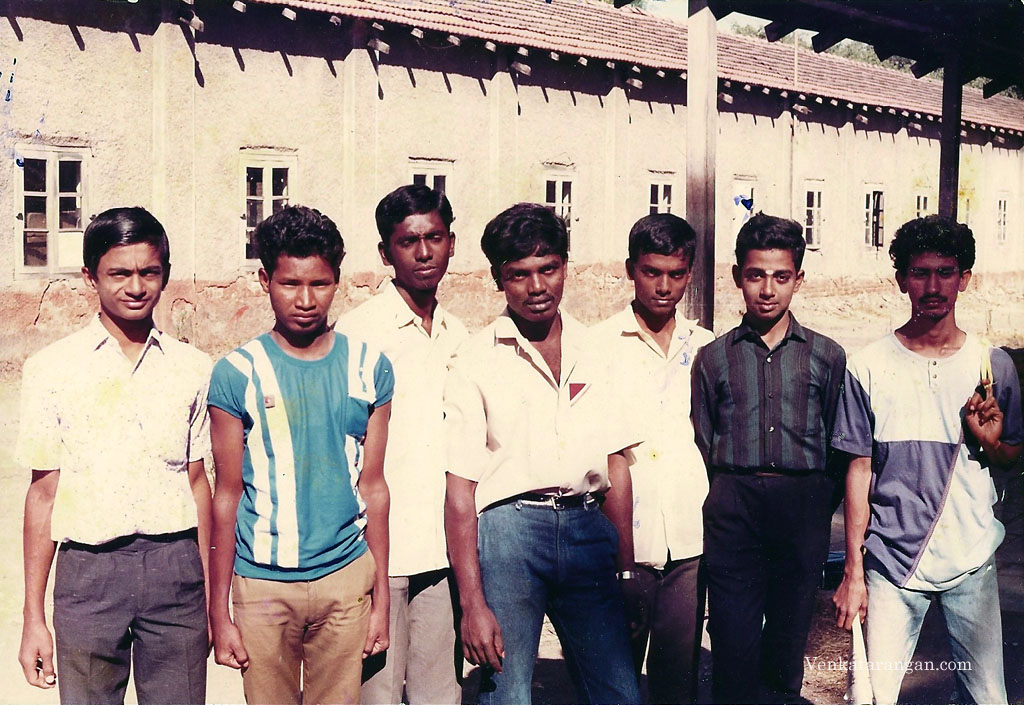
Taken during the NCC Annual Camp I went in 1988-89. I am the first from left, Mahesh (my friend) is the second from Right.
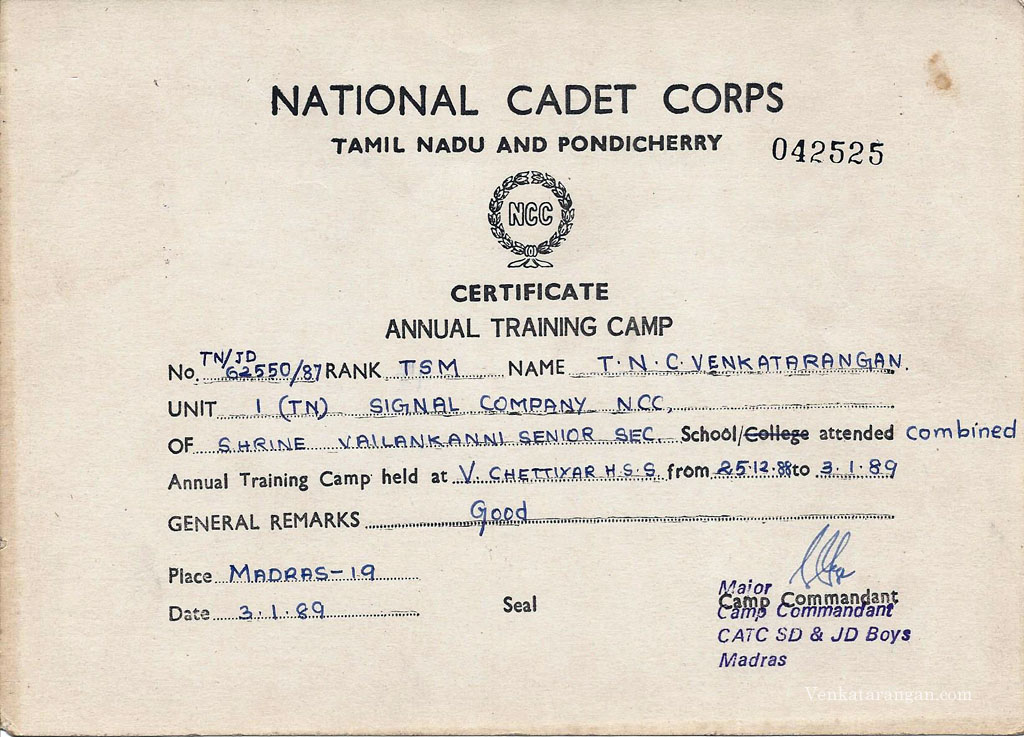
Certificate for the National Cadet Corps (Tamil Nadu and Puducherry) Annual Training Camp by Camp Commandant, CATC SD & JD Boys, Madras
The Shivaji Trail Trek, Pune
Before the annual camp, I had participated along with Mahesh in the strenuous Shivaji Trail Trek, which involved visiting many hilltops and forts around Pune that Chhatrapati Shivaji Maharaj conquered on horseback, but we had to trek by foot, about 30+ Kilometres each day. The trek meant travel of over one thousand Kms by train on my own, carrying my bedding, cup, plate, and dresses in a heavy holdall myself – carrying the holdall is an experience that trained me well to pack my bags on all my travels over the decades.
I was about 14 years old and grew up in the comforts of home and never spend the night away from my parents or sisters. I and Mahesh were the only two junior cadets from our division in Madras.
After reaching the base camp that was at an army outpost in the forests of Margasani village near Pune, Maharashtra, we were each assigned to tents. The tents had no flooring (just rough sand floor) and we shared the tent with a unit from Punjab whose language (and Hindi) neither I nor Mahesh knew – we communicated with sign language and whatever English words they understood. It was tough to get up at 4 AM or so, answer nature call, then stand in line for a cup of tea and two Marie biscuits and start the trek by 5 AM; if we miss to stand in the line by 4.15 AM or so we will miss out on the tea too. Only after the next three to four hours and a trek of 10 Kilometres or so, will we get our first stop and breakfast, which was the same two slices of bread. Lunch was the same 3 pieces of Chapati and tasteless potato subji. The scariest was to go out in the dark (pre-sunrise) in the wild and use the pit toilets (pit latrine) – they smelled awful, and the holes were big enough for us (kids) to fall easily.
Though the walk of over 30 Kilometres under the strict supervision of an army officer, the lieutenant who led was the toughest (we nicknamed him the chicken-head due to his pitched voice), was hard, the scenery around us was breathtaking. When trekking, especially the ascend, we were not allowed to stop (not even for a second) or take a sip of water. During the descent from one of the hilltops, I slipped (my canvas shoes made it worse) and I was coming down fast towards the hard rock surface several hundred feet below – that’s when like the hand of God, a senior division cadet from a city college caught hold of me and saved my life – I owe my dear life to that nameless cadet, who ensured my safety throughout that day.
During the trip of two weeks, I wrote three letters to my parents and posted them when we saw a post box. I still have these letters with me, treasured possessions. You can see two of them below – it feels a bit silly reading them after thirty-four years, but they transport me to the 15-year-old version of myself.
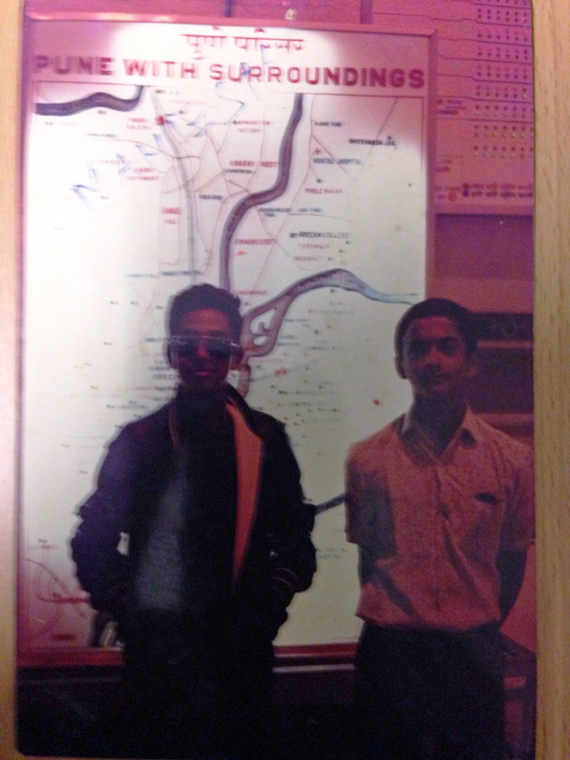
The only photo we have our NCC Camp, Pune – Shivaji Trail Trek 1988
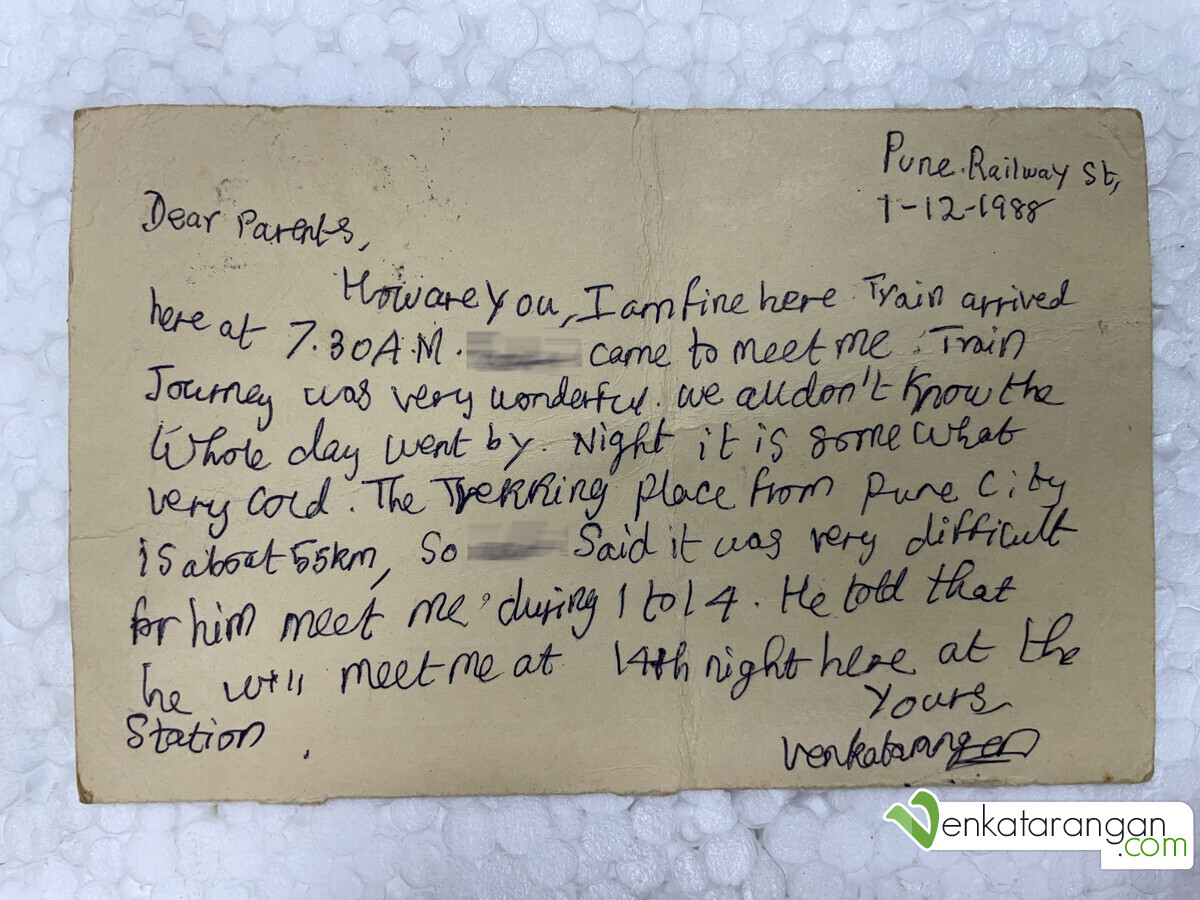
Postcard I wrote to my parents in 1988 from Pune railway station – my first night away from my parents
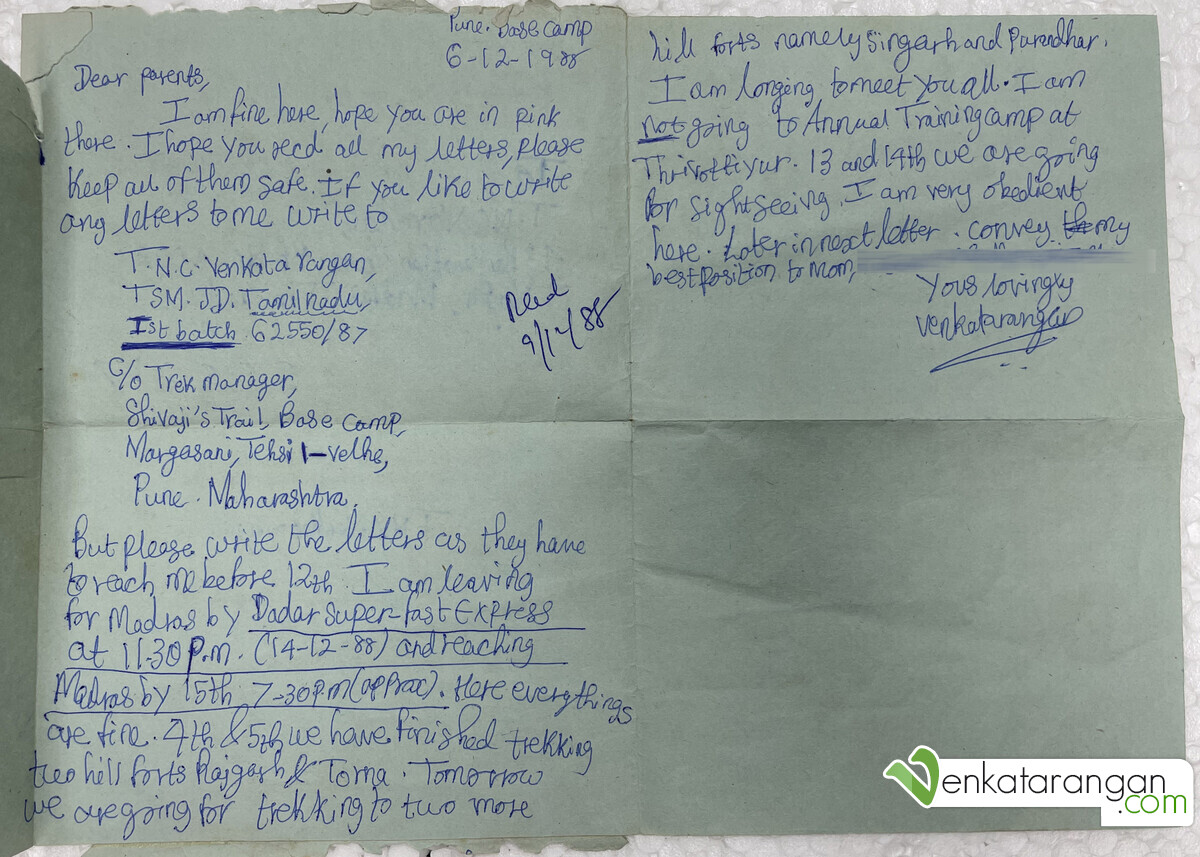
The inland letter I wrote to my parents in 1988 from Pune Base Camp, National Cadet Corps, Shivaji Trail Trek
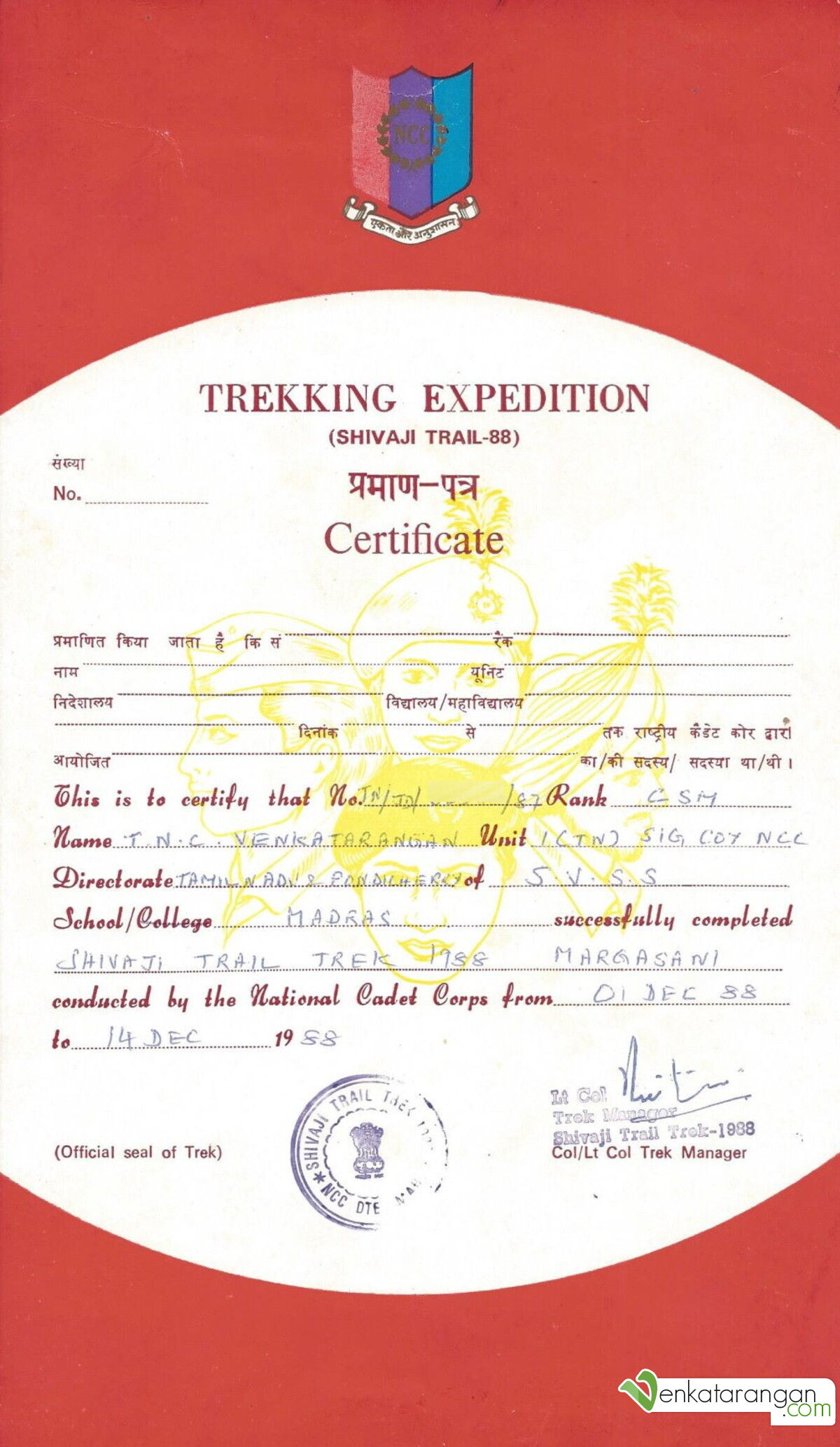
Certificate given to Venkatarangan for completing the Shivaji Trail Trek, 1988 in Margasani conducted by National Cadet Corps
The forts that we trekked
- Purandar Fort – The birthplace of Chhatrapati Sambhaji, the son of Chhatrapati Shivaji, stands at 4,472 ft (1,390 m) above the sea level.
- Torna Fort – In 1646, Chhatrapati Shivaji Maharaj captured this fort at the age of sixteen
- Sinhagad – A fierce battle in 1670 was fought here by Tanaji Malusare, general of Chatrapati Shivaji
- Rajgad Fort – Known for the birth of Chatrapati Shivaji Maharaj’s son Rajaram I, the death of Queen Saibai.
The book I got as gift from my school
For my excellence (!) as the TSM of my school’s unit of NCC, I was awarded a gift during the school’s 1990 annual day event by then MLA (Member of Legislative Assembly, Tamil Nadu state) Mr N Shunmugam. I was so proud to receive it. The book was the “History of the Middle Ages” written by Ye. Agibalova and G. Donskoy, published by Progress Publishers. In the 1980s, books from USSR (Soviet Union) and distributed in India by NCBH (New Century Book House) were of excellent quality, priced attractively and popular with readers.
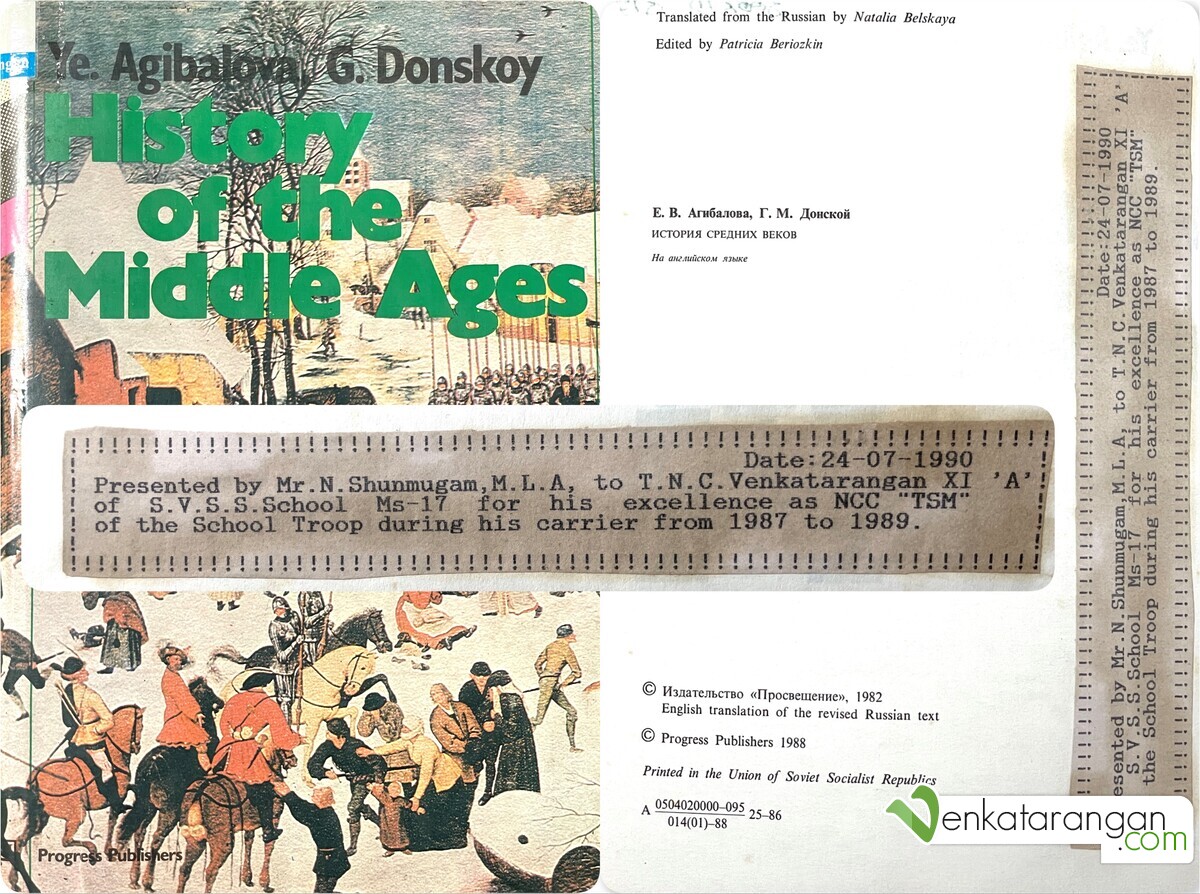
“History of the Middle Ages” written by Ye. Agibalova and G. Donskoy, published by Progress Publishers


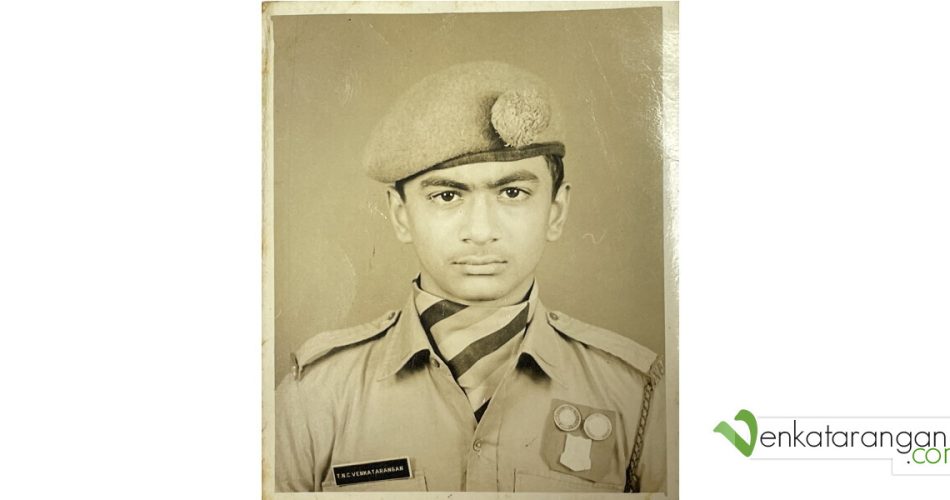
Jai hind sir I am (SUO)senior under officer national cadet corps 7 Delhi battalion Ayush Ghosh and I am really inspired by your story . Your story inspires me to get as high as possible in ncc. I am not from a defence background but still want to join the armed forces
Hi sir, I’m Mugil
Super sir, Your story is very engaging and inspiring to me. Me too an NCC cadet now in school with rank “THM – Troop Havildar Major” (Your rank “TSM” and my rank “THM” ). Thank so much for sharing your story with me. ❤️❤️
Thank you for your appreciation and sharing your experience.